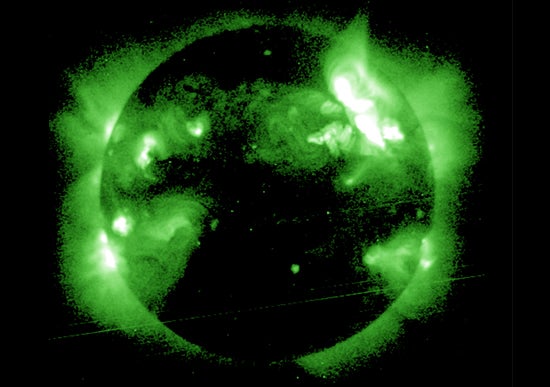What happens to our society if we lose all electricity? A new TV show premiering next month, Revolution, will explore that question. It will be set in a world “where every single piece of technology—computers, planes, cars, phones, even lights—has mysteriously blacked out forever.”
Eric Kripke, one of the show’s executive producers, said, “We did our homework and came up with something that’s actually plausible.” He’s right.
Though the cause of Revolution’s blackout will be revealed in the course of the show, it certainly points to an electromagnetic pulse (EMP)—a threat that is, in fact, plausible and for which the United States is unprepared.
On August 15, 2003, a major blackout occurred throughout the northeastern U.S. and Canada, offering more than 55 million people a glimpse of what life could be like after a large-scale EMP. In that case, most services were restored within a day, but that would not be the case after an EMP. Damage to lives and property would be immense, and the ensuing devastation would continue for years, if not decades. Unfortunately, many in the media have dismissed the idea.
The good news is that the U.S. can do a lot to protect itself from the effects of a deliberate EMP attack by an enemy or an EMP caused by space weather, such as a large solar flare. But local, state, and federal governments have a lot of work to do. The Heritage Foundation has urged Congress to establish August 15 as National EMP Awareness Day, to educate the public and lawmakers on the threat and the need for action.
Where Would an EMP Come From?
An EMP affecting the U.S. could come from two sources: the detonation of a nuclear weapon at a high altitude, or a naturally occurring space weather event, such as a large solar flare.
A rogue state would not need a long-range ballistic missile to deliver a nuclear warhead. Even short-range ballistic missiles carrying an EMP device or a nuclear warhead launched from a ship off the U.S. coast could impact millions. Today, more than 30 countries, including Iran and North Korea, possess ballistic missile capabilities.
What Would Happen?
Heritage’s Michaela Bendikova and Jessica Zuckerman have written about the impact of an EMP:
A successful EMP attack – a high-intensity burst of electromagnetic energy caused by a rapid acceleration of charged particles – would fundamentally change the world. Airplanes would fall from the sky; most cars would be inoperable; electrical devices would fail. Water, sewer, and electrical networks would fail simultaneously. Systems of banking, energy, transportation, food production and delivery, water, emergency services, and even cyberspace would collapse.
It would take years – possibly decades – to restore the U.S. electricity supply. Recovery abilities would be critically limited, and the country would be challenged to support current population levels. Millions would likely die.
What Can We Do to Prevent It?
Interest in the EMP threat dropped after the collapse of the Soviet Union, and today, the Department of Homeland Security does not have a national recovery plan for the event of an EMP attack. There are a number of things the U.S. military and Homeland Security could do to protect our critical infrastructure from devastation. Bendikova and Zuckerman write that America should:
- Improve and restructure U.S. missile defense programs, including our ability to intercept ballistic missiles while in flight.
- Demand that the Administration develop a National Recovery Plan. The first focus should be improving the infrastructure on which all other sectors are dependent, such as electrical power and telecommunications.
- Determine which countries could attack. The U.S. should produce a national intelligence estimate on which countries are pursuing EMP weapons or are already capable of launching an EMP attack.
- Prepare and protect the nation’s infrastructure. Cyber infrastructure, for example, is dependent on the power grid—which makes it a unique challenge in an EMP scenario.
- Require more research. In addition to raising national awareness, more research is needed on the risk associated with an EMP attack to ensure that the nation understands the full scope of the threat and how to close critical vulnerability gaps.
To learn more about the EMP threat and what the U.S. needs to do to prevent it, see Preventing Catastrophe: Time for a National EMP Awareness Day.
Quick Hits:
- A new Obama Administration policy will soon drive up the price of meat at the grocery store, reports The Examiner.
- Gas prices continue to climb, up 30 cents since mid-July, lifting the 2012 average to $3.61 a gallon, vs. $3.51 in 2011, which had been the most expensive year ever for drivers.
- The Washington Post reports that days before Solyndra declared bankruptcy, an Obama energy official warned staffers not to use personal email accounts because they could be subpoenaed.
- President Obama has built a small brewery inside the White House.
- A family business in Michigan is challenging President Obama’s anti-conscience mandate in court, arguing the policy violates his religious beliefs. Read more about their story here.
